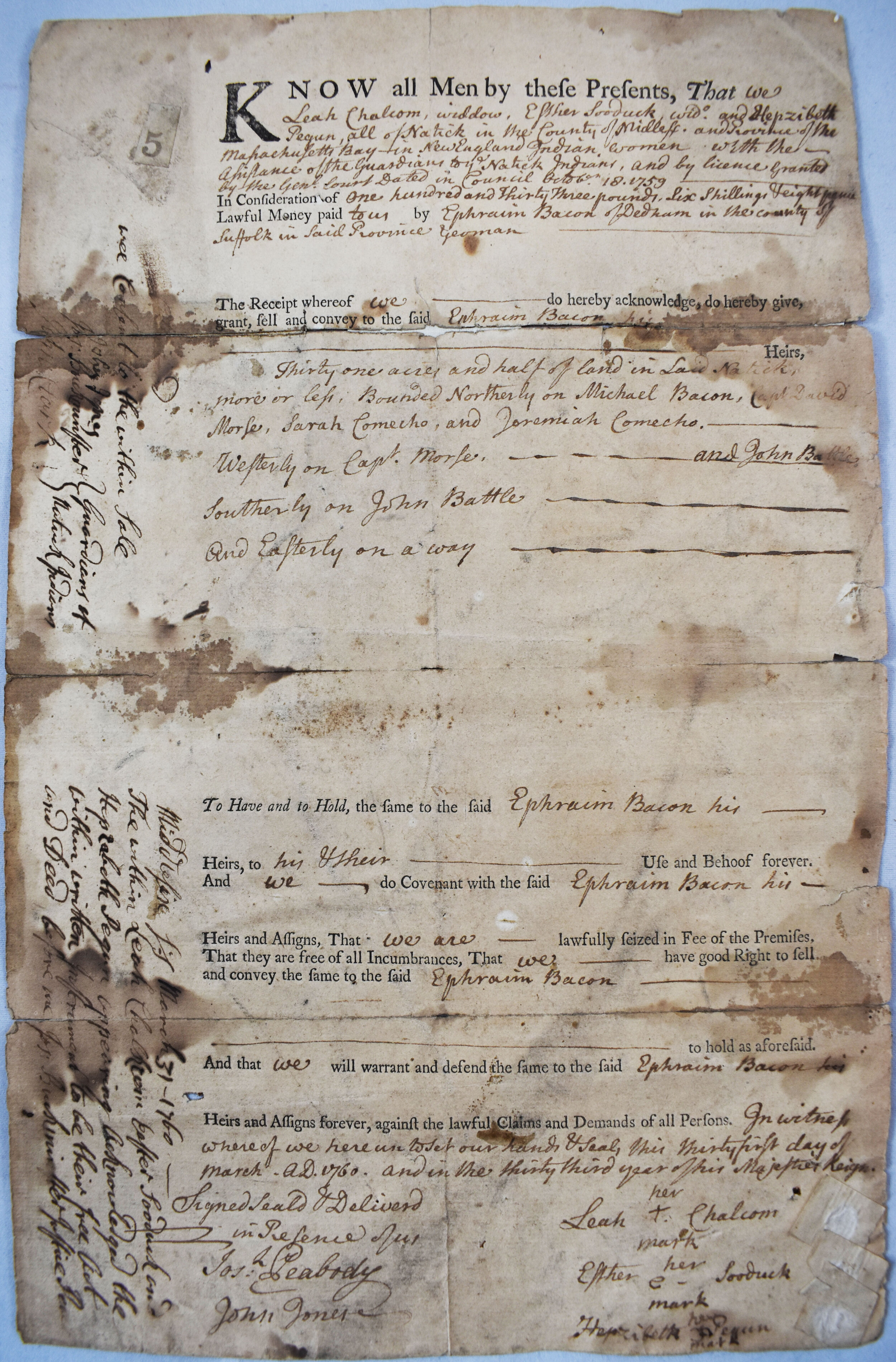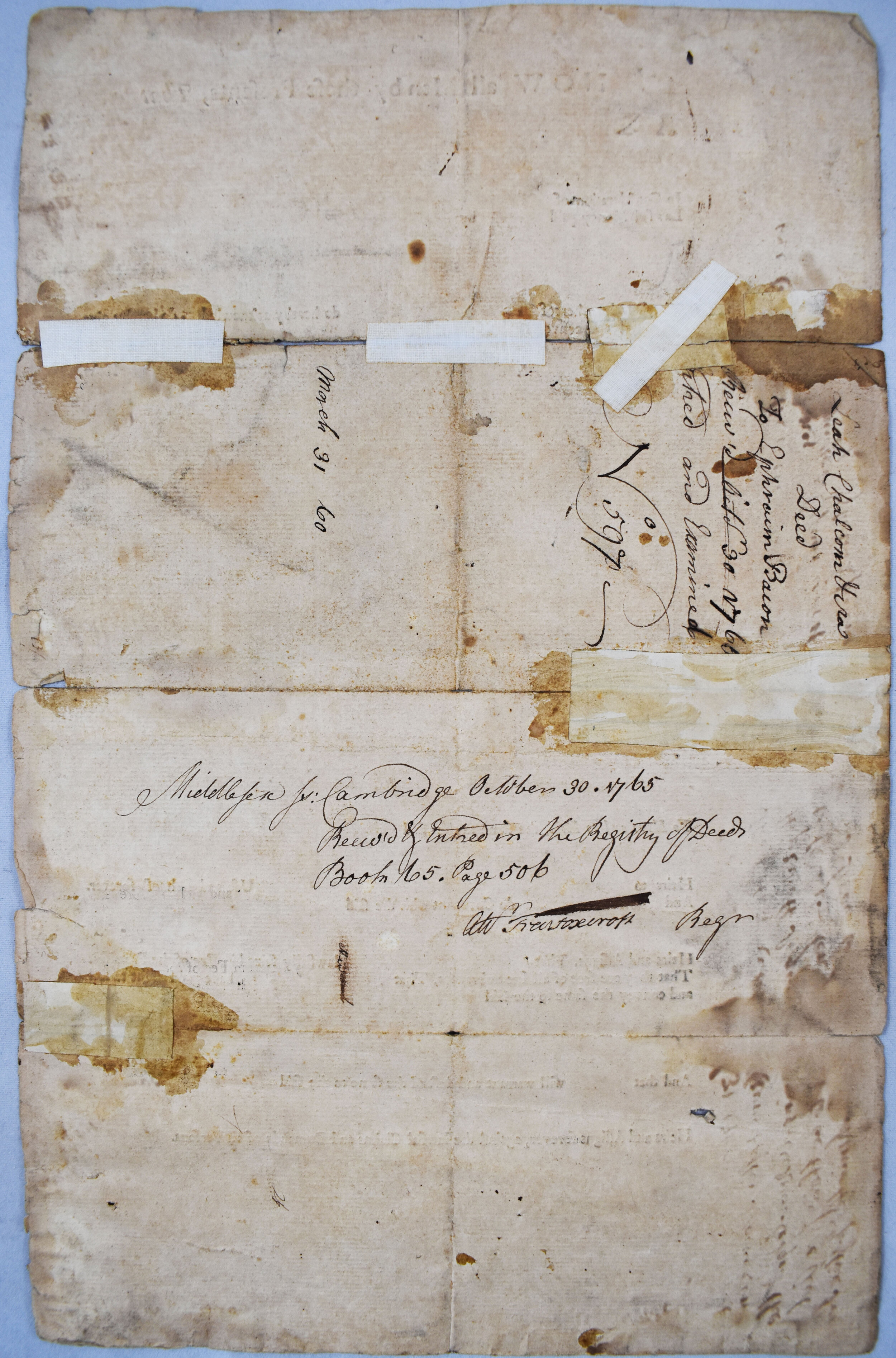Chalcom Deed of Sale | 1760
This deed conveyed 31½ acres of land from three Natick Indian women--Leah Chalcom, Esther Sooduck, and Hepzibeth Pegun--to English colonist Ephraim Bacon. The grantors [sellers] named in this deed are Leah Chalcom and her widowed daughters, Esther Sooduck and Hepzibeth Pegun. All three women had inherited land from their husbands and had petitioned the Massachusetts General Court to sell the land rather than farm it themselves. (O’Brien, Divorced from the Land).
The mid-1700s saw almost all of Natick’s land seized from descendants of the Wampanoag, Nipmuc, and other Native people who settled in Natick after 1651 by English speculators and settlers, who rapidly outnumbered them. Legal prosecution and poverty hastened the process by driving many Natick Indians deeply into debt.
Before the English invaded, farming was women’s work. However, John Eliot and his successors mandated that Indians “live as Englishmen,” remaining in one location year-round instead of in winter and summer homes, dressing like the English, and adopting English gender roles (men doing farm work). Ephraim Bacon, the buyer named in this deed, is likely Ephraim Bacon (1742-1825), buried in Morse Cemetery. He was later a private in Natick’s regiment during the American Revolution. (Ancestry.com)
Literacy and the signatures on this deed: According to O’Brien, the Chalcom children were literate (O’Brien, Divorced from the Land), but note that on this deed, the three women did not sign their names; instead, each made a “mark” witnessed by the men whose names are signed below. (It was common in the colonial era for people to be taught to read but not write.) The small squares of paper beside the signatures cover drops of sealing wax, which presumably have the impressions of an official seal, certifying that the deed is an authentic document under English law.


